Discover the key differences between centrifugal and masticating juicers. Explore their juicing methods, speed, and impact on juice quality in this guide. Centrifugal or masticating juicer, there are several things to look at it when deciding. It is time you want to join the juicing trend, so you need to purchase a juicer. With many varieties today, it may get hard to choose. Let’s help you figure out, a centrifugal or masticating juicer. They both have their pros and cons, but it depends on the one that suits your needs most.
Basics Between Masticating and Centrifugal Juicers
Masticating Juicers
Masticating juicers, also known as slow or cold-pressed juicers, offer numerous advantages. They operate quietly and extract larger quantities of juice compared to centrifugal juicers. However, masticating juicers can be further categorized into three types: vertical, horizontal, and twin gear juicers, each with its own unique features and benefits. Understanding these categories can help you choose the perfect masticating juicer for your specific juicing needs.
The above are just basics of the masticating juicers; however, there is still more information about them because they are found in 3 categories:
Vertical juicers
Vertical juicers are a specific type of masticating juicers characterized by their upright design. Unlike horizontal juicers that have a wide footprint, vertical juicers have a compact and space-saving form factor, making them ideal for kitchens with limited counter space.
One notable advantage of vertical juicers is their ease of use. The vertical orientation allows for a gravity-fed system, where the ingredients are placed vertically into the feeding chute, allowing them to flow naturally into the juicing mechanism. This design eliminates the need for excessive pushing or tampering, making the juicing process smoother and more convenient.
Vertical juicers typically feature an auger or screw-like mechanism that rotates slowly to crush and squeeze the fruits and vegetables against a screen or mesh, effectively extracting the juice. The slow rotation speed minimizes heat generation during the juicing process, which helps preserve the natural enzymes, nutrients, and flavors of the produce, resulting in high-quality, nutrient-rich juices.
Additionally, vertical juicers are often equipped with efficient pulp ejection systems. The extracted pulp is separated from the juice, allowing for continuous juicing without the need to frequently stop and clean out the pulp. This feature is especially useful when preparing large batches of juice or when juicing multiple ingredients in one session.
Cleaning vertical juicers is generally straightforward as well. Most models have removable parts that can be easily disassembled, rinsed, and cleaned. However, it’s essential to consult the manufacturer’s instructions for specific cleaning guidelines.
Vertical juicers are versatile and can handle a wide variety of fruits, vegetables, leafy greens, and even wheatgrass. Some models may offer additional attachments or functions, such as making nut butter, baby food, sorbets, or even grinding coffee beans.
Overall, vertical juicers offer a convenient, space-saving design, efficient juice extraction, nutrient preservation, and easy cleanup. Consider your specific juicing preferences and requirements to choose the right vertical juicer that suits your needs.
Horizontal juicers
Horizontal juicers, another type of masticating juicer, differ from vertical juicers primarily in their design and orientation. As the name suggests, horizontal juicers are characterized by their horizontal layout, with the auger or crushing mechanism positioned horizontally.
One advantage of horizontal juicers is their versatility. They are capable of handling a wide range of ingredients, including fruits, vegetables, leafy greens, and even wheatgrass. Some horizontal juicers come with additional attachments, such as pasta makers, homogenizers, or food processors, allowing for a broader range of culinary applications beyond juicing.
Horizontal juicers typically operate at a slower speed, similar to vertical juicers, to ensure minimal heat generation during the juicing process. This slower rotation speed helps preserve the natural enzymes, vitamins, and nutrients in the juice, resulting in high-quality, nutrient-dense beverages.
The horizontal orientation of these juicers often contributes to their efficiency. The ingredients are fed into a feeding chute and then come into contact with the auger, which crushes and presses them against a mesh or screen. This process effectively extracts the juice while separating the pulp, which is collected in a separate container.
Cleaning horizontal juicers can vary depending on the model. Some models have easily removable parts that can be disassembled and cleaned with relative ease. However, it’s important to follow the specific cleaning instructions provided by the manufacturer to ensure proper maintenance.
One potential consideration with horizontal juicers is their larger footprint compared to vertical juicers. Due to their horizontal design, they may require more counter space for operation and storage. However, this larger size is often balanced by their versatility and additional functions.
Ultimately, the choice between a horizontal or vertical juicer depends on personal preferences, available space, and desired features. If you value versatility and the ability to perform various food processing tasks in addition to juicing, a horizontal juicer may be the right choice for you.
Twin gear juicers
Twin gear juicers, also known as triturating juicers, are a specialized type of masticating juicers that utilize two interlocking gears to extract juice from fruits and vegetables. These gears work together in a meticulous and efficient manner to maximize juice yield and preserve nutrient content.
The twin gears in these juicers are typically made of stainless steel or a durable food-grade material. They have sharp edges and rotate slowly in opposite directions, creating a crushing and grinding action that effectively breaks down produce and extracts juice. This meticulous process ensures that a significant amount of juice is extracted from the ingredients, leaving behind a drier pulp.
One of the main advantages of twin gear juicers is their exceptional juice quality. The slow rotation speed combined with the crushing action of the gears helps to minimize heat generation, oxidation, and frothing during the juicing process. This preservation of enzymes, vitamins, and nutrients results in vibrant, nutrient-rich juices with enhanced flavor and longer shelf life compared to juices produced by other juicer types.
Twin gear juicers are known for their versatility and ability to handle a wide range of ingredients. They excel at juicing leafy greens, wheatgrass, and fibrous vegetables, ensuring high juice extraction rates even from harder-to-juice produce. Some models may come with additional attachments or functions, such as making nut butter, sorbets, or grinding spices, further expanding their culinary capabilities.
Due to their intricate design and advanced juicing mechanism, twin gear juicers often require more assembly and disassembly time for cleaning compared to other juicer types. However, many models come with specialized cleaning brushes and tools to facilitate the process.
It’s important to note that twin gear juicers are generally larger and heavier than other juicer types, requiring more counter space and storage. Additionally, their higher price point may be a consideration for some individuals.
Twin gear juicers are favored by serious juicing enthusiasts, health-conscious individuals, and those seeking the utmost quality and nutrient retention in their juices. If you prioritize superior juice extraction, versatility, and don’t mind the slightly more involved cleaning process, a twin gear juicer can be an excellent investment for your juicing needs.

Centrifugal Juicers
On the other hand, a centrifugal juicer has blades that spin around at a very high speed separating juice from the fruits pulps, skin, and seeds. The juicer then produces juice and pulp in two separate containers.
Centrifugal juicers are a popular type of juicer known for their high-speed juicing process. These juicers work by using a rapidly spinning blade to extract juice from fruits and vegetables. While they offer certain advantages, it’s important to understand their features and limitations.
One key advantage of centrifugal juicers is their speed. They operate at high RPM (revolutions per minute), allowing for quick and efficient juicing. This is particularly beneficial when you need to make juice in a hurry or have limited time available. The high-speed rotation of the blade effectively shreds and extracts juice from the produce, yielding a relatively fast juicing process.
Centrifugal juicers typically feature a feeding chute at the top, where you insert the ingredients. Once inside, the produce is quickly chopped by the blade, and the centrifugal force generated by the spinning motion separates the juice from the pulp. The juice is collected in a container, while the pulp is expelled into a separate pulp container.
Another advantage of centrifugal juicers is their generally more affordable price point compared to other juicer types. They are often considered budget-friendly options for those looking to incorporate juicing into their lifestyle without investing heavily in equipment.
However, there are some limitations to consider. Centrifugal juicers tend to produce juice with a shorter shelf life due to the higher levels of oxidation that occur during the fast juicing process. Additionally, the high-speed spinning can generate heat, which may slightly degrade the nutrient content of the juice.
Centrifugal juicers are excellent for juicing soft and watery fruits and vegetables, such as oranges, apples, and cucumbers. They may struggle with efficiently juicing leafy greens, wheatgrass, or fibrous vegetables. However, some centrifugal juicers offer variable speed settings or additional attachments to help overcome these limitations.
Cleaning centrifugal juicers is generally easier compared to other juicer types. Many models have removable parts that can be quickly rinsed or placed in a dishwasher. This convenience makes them a popular choice for individuals seeking a juicer that is quick and easy to clean.
In summary, centrifugal juicers offer fast and efficient juicing, making them suitable for individuals looking for speed and convenience. They are particularly effective for juicing soft fruits and vegetables. However, if you prioritize juice quality, nutrient retention, or the ability to juice leafy greens, other juicer types such as masticating juicers may be more suitable for your needs.
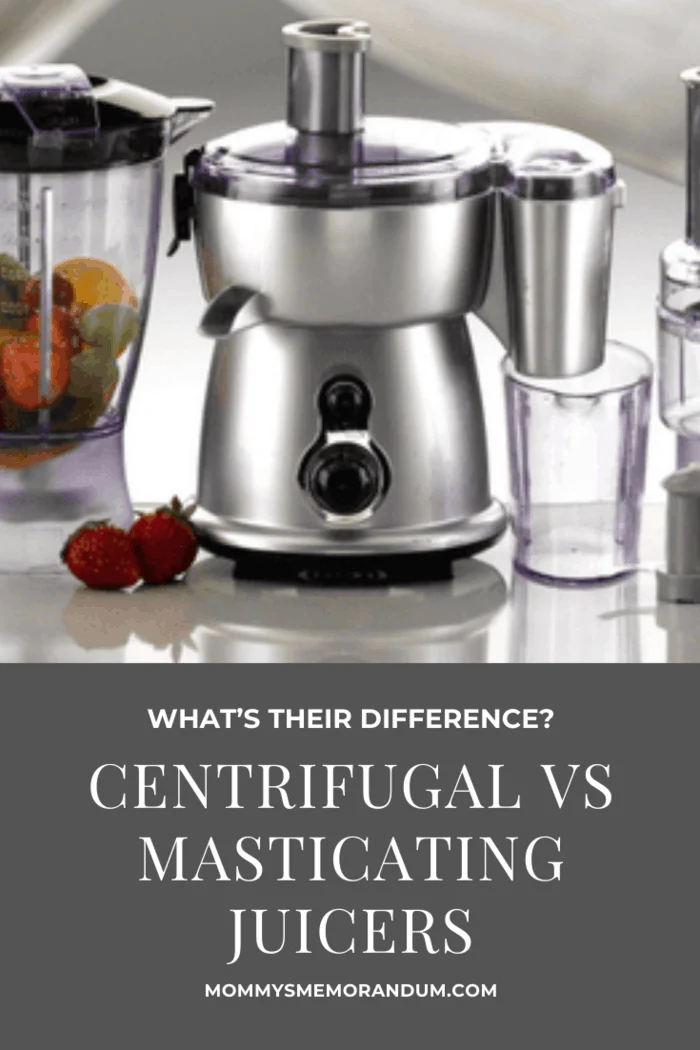
Juicing Speed
Centrifugal juicers do the juicing process faster, which tends to be noisier than their counterpart, masticating juicers. The centrifugal juicers have two speeds, 13000 and 6500rpm, meant for hard or soft vegetables and fruits. Masticating juicers crush and squeeze juice from the juicing ingredients using a slowly rotating screw and the screen. Its speed of juicing is much slower than the centrifugal; hence their nickname, slow juicers.
Juicing speed refers to the rate at which a juicer extracts juice from fruits and vegetables. It is an important factor to consider when choosing a juicer as it can impact the convenience, efficiency, and quality of the juicing process.
Different types of juicers operate at varying speeds:
- Centrifugal Juicers: Centrifugal juicers are known for their high-speed operation. They typically spin at a range of 6,000 to 14,000 RPM (revolutions per minute). The fast spinning motion quickly breaks down the produce and extracts juice, resulting in a relatively quick juicing process.
- Masticating Juicers: Masticating juicers, also known as slow juicers or cold-pressed juicers, operate at lower speeds compared to centrifugal juicers. They typically rotate at a speed of around 40 to 100 RPM. The slower speed allows for a more thorough extraction of juice, as it crushes and squeezes the produce against a mesh or screen. Although the process takes more time, masticating juicers are known for their ability to yield higher juice quantities and better preserve nutrients.
- Twin Gear Juicers: Twin gear juicers, or triturating juicers, also operate at low speeds similar to masticating juicers. They typically rotate at a range of 80 to 160 RPM. The interlocking gears work together to crush and grind the produce, maximizing juice extraction and nutrient retention.
The speed of juicing can impact several aspects:
- Efficiency: High-speed juicers like centrifugal juicers can quickly process large quantities of produce, making them convenient for individuals with time constraints or a need for immediate juicing.
- Juice Quality: Slow juicers, such as masticating and twin gear juicers, operate at lower speeds, minimizing heat generation and oxidation during the juicing process. This helps retain the natural enzymes, vitamins, and nutrients in the juice, resulting in higher quality, nutrient-rich beverages.
- Juice Yield: Masticating and twin gear juicers, due to their slower and more thorough extraction process, often yield more juice compared to centrifugal juicers. This can be beneficial when juicing expensive or hard-to-find ingredients.
When selecting a juicer, consider your priorities—whether you value speed, nutrient retention, juice yield, or a balance between these factors. It’s important to choose a juicer that aligns with your specific needs and preferences to ensure a satisfying juicing experience.
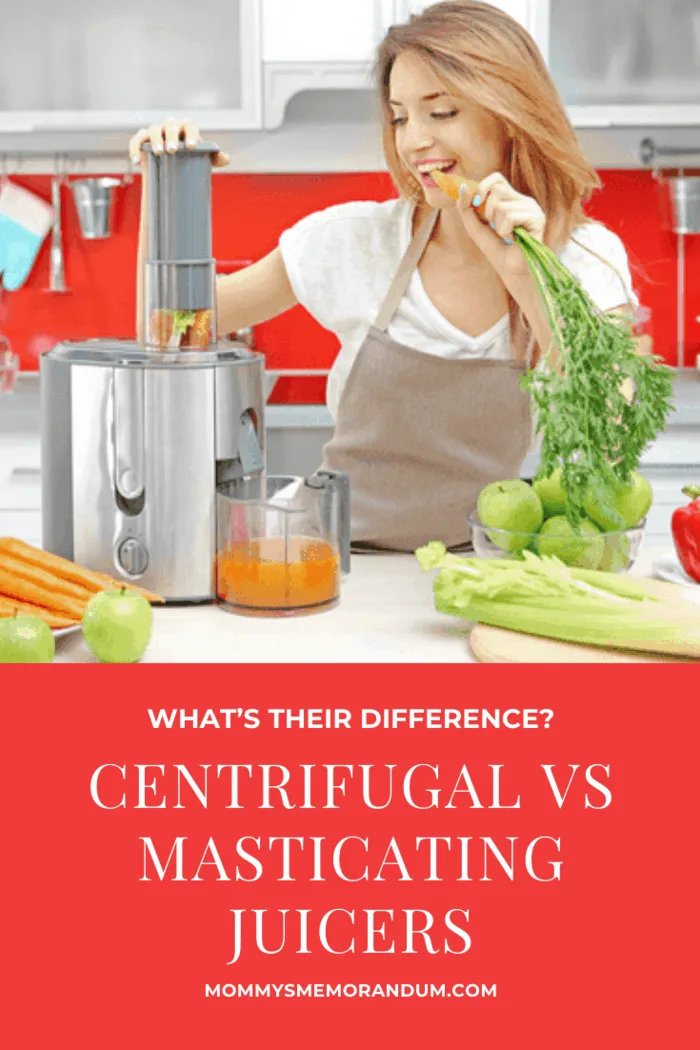
The Juice Nutritional Value
According to Very Well Fit, the nutritional value is the sole purpose of juicing, so everyone wants nutritious juice. This depends on two factors:
The amount of force used to extract the juice from the ingredients
And the process of breaking down the fiber
This explains why masticating juicers have better reviews when it comes to the juice quality; chewing and grinding operational process is most efficient in breaking down the ingredients.
Masticating juicers also produce juice that is more nutritious because the ingredients go through small spaces in the gears achieving better cell breakdown.
When it comes to the centrifugal juicer, the force from the spinning blades breaks down the ingredients.
This tends to be faster, so the ingredients end up not completely broken down, making the juice relatively less colorful and have lower nutritional content.
Oxidation takes place in centrifugal juicers, which reduces the juice’s shelf life since it will tend to discolor much faster due to exposure to oxygen.
Well, they produce heat, but it is not that much to cause a lot of damage to the nutritional value of the juice.
Masticating juicers, on the other hand, incorporate very little air so their juice can last longer.
There is also less heat produced in the best masticating juicer, so nutrients are not destroyed in the juicing process.
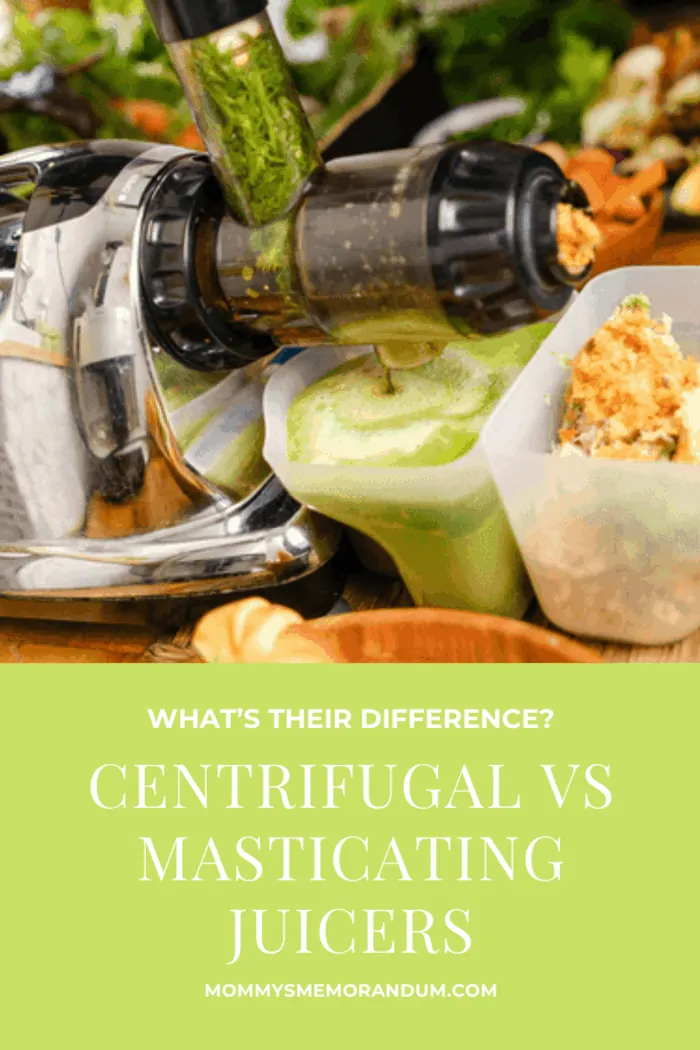
Ingredients Processed
This centrifugal type cannot juice some ingredients like leafy vegetables and very soft fruits.
A centrifugal juicer struggles to process soft ingredients because a lot of the juice goes to the pulp container, which turns out as wasteful.
In addition, the leafy vegetables will not produce good amounts of juice from the centrifugal juicers.
The simple story behind centrifugal juicers is that the fast spinning of the blades produces heat, which destroys nutrients.
Masticating juicers, considering their method of processing, allow all juicing ingredients to be processed while ensuring that extract the maximum amount of juice from them.
It can juice fruits and vegetables, both soft and hard.
Although the masticating juicers have a low rotational speed, the large augers process more juice with one revolution than the centrifugal juicers.
The augers exert a lot of pressure by separating much juice from the pulp.
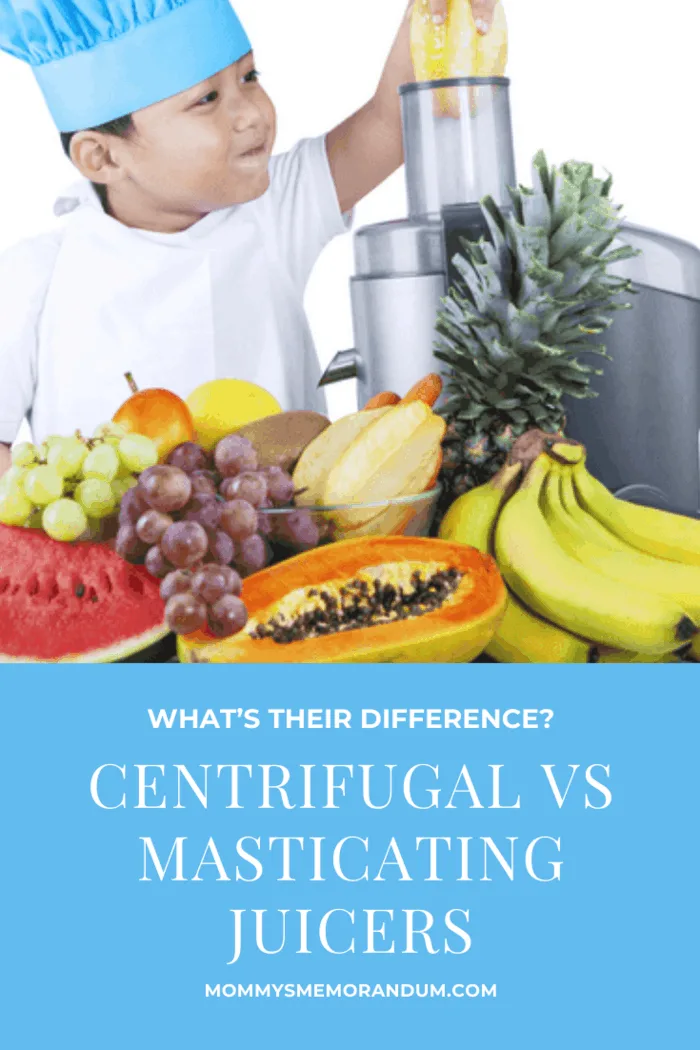
Does The Juicing Speed Affect Juice Quality?
Masticating juicers, which are slow, are seen as inconvenient because they juice slowly and they are made with complicated parts that can even get hard to clean every part. However, to solve this, the recent vertical masticating juicers have fewer parts. They are also quicker in their juicing process. Their augers and filter screens are improved, allowing them to release more juice without affecting its nutritional value. Although still, they are a little slower, spending some time preparing quality juice is rewarding in the end. Centrifugal juicers offer convenience and speed, and they are less costly, while masticating juicers, on the other hand, are a bit more expensive. Still, they ensure you make juice from a wide variety of products and have a more nutritious juice that has a longer shelf life. Think about what you want from the juicer before you purchase, as there is a lot to consider.
Yes, the juicing speed can affect juice quality. Generally, slower juicing speeds, as found in masticating and twin gear juicers, tend to produce higher-quality juice compared to faster juicing speeds found in centrifugal juicers.
Here’s how juicing speed can impact juice quality:
- Nutrient Retention: Slower juicing speeds minimize heat generation during the juicing process. Heat can degrade certain heat-sensitive nutrients like enzymes, vitamins, and antioxidants. By reducing heat, slow juicers better preserve the natural nutrients, resulting in a higher nutritional content in the juice.
- Oxidation: High-speed juicers, such as centrifugal juicers, introduce more air into the juicing process due to their rapid spinning motion. This increased exposure to air can cause oxidation, which can degrade the nutritional quality and freshness of the juice. Slow juicers operate with minimal air exposure, helping to minimize oxidation and preserve the juice’s quality for a longer time.
- Juice Yield: Slow juicers, due to their thorough and efficient extraction process, often yield more juice compared to high-speed juicers. This means that a greater quantity of nutrients is extracted from the produce, resulting in a more nutrient-dense juice.
- Pulp Consistency: Slower juicers tend to produce drier pulp compared to centrifugal juicers. This indicates that more juice has been extracted, leaving behind a higher concentration of nutrients in the juice.
While slower juicing speeds generally produce higher-quality juice, it’s important to note that the type of produce being juiced also plays a role. Some fruits and vegetables may be better suited for high-speed juicers, while others, particularly leafy greens or wheatgrass, may benefit from the gentle and thorough extraction provided by slow juicers.
Ultimately, the choice of juicer should be based on your specific juicing preferences, the types of ingredients you plan to juice, and the desired balance between convenience and juice quality.
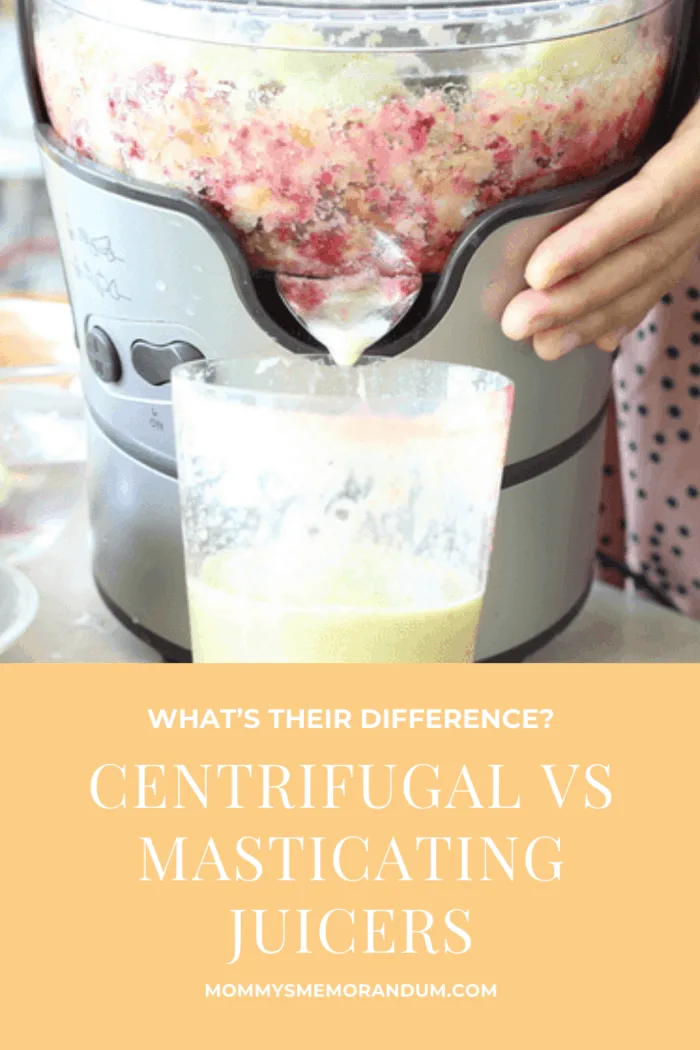
Conclusion
A centrifugal or masticating juicer, you now have a better understanding of which is better for you.
Price matters, and counterfeits are there, which are very enticing.
It is best if to go for a well-known brand that is original because, with imitations, the quality of the juice will not be how you expect.
You might, however, choose a cheaper juicer the first time and save money little by little to buy a quality juicer that might be unfriendly to your budget now.
It is better to juice less nutritious juice than not juice at all.
